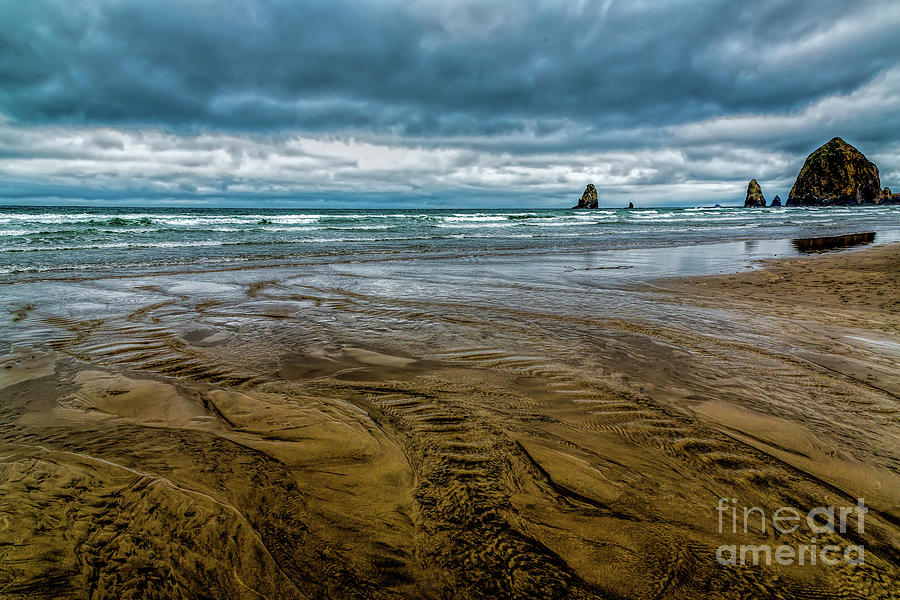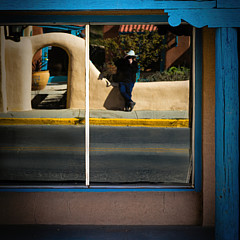
Gone With The Tide

by Jon Burch Photography
Title
Gone With The Tide
Artist
Jon Burch Photography
Medium
Photograph - Digital Capture
Description
Haystack Rock is a 235 foot tall sea stack in Cannon Beach, Oregon. It is sometimes claimed locally to be the third-tallest such "intertidal" meaning it can be reached by land, structure in the world, but there are no scientific references to support this. A popular tourist destination, the monolithic rock is adjacent to the beach and accessible by foot at low tide. The Haystack Rock tide pools are home to many intertidal animals, including starfish, sea anemone, crabs, chitons, limpets, and sea slugs. The rock is also a nesting site for many sea birds, including terns and puffins.
The Rock is located about 1.5 miles south of downtown Cannon Beach in Clatsop County and about 80 miles west of Portland. The nearest major road is U. S. Route 101. Haystack Rock is part of the Tolovana Beach State Recreation Site. The area below the mean high water level is managed by Oregon Parks and Recreation. The area above the mean high water level is managed by the Oregon Islands National Wildlife Refuge of the United States Fish and Wildlife Service.
There are several other geographic features in Oregon named Haystack Rock, including two off the Oregon Coast. The tallest of these is in Tillamook County, located off Pacific City and near Cape Kiwanda. It stands 327 feet above the sea and is the world's fourth largest sea stack or off-shore monolith in the world. The other is in Coos County near Bandon. Haystack rock is accompanied by two smaller rocks.
Composed of basalt, Haystack Rock was formed by lava flows emanating from the Grand Ronde Mountains 10 to 17 million years ago. The lava flows created many of the Oregon coast's natural features, including Tillamook Head, Arch Cape, and Saddle Mountain. Haystack Rock was once joined to the coastline but years of erosion have since separated the monolith from the coast. Three smaller, adjacent rock formations to the south of Haystack Rock are collectively called "The Needles".
Haystack Rock was granted Marine Garden status by the Oregon Department of Fish and Wildlife in 1990. Collecting plants or animals is strictly prohibited. Climbing above the mean high tide level also known as the barnacle line, disturbs nesting birds and is not allowed. The Haystack Rock Awareness Program is a volunteer association which conducts educational seminars at the rock during low tide between May and September.
Visitors to Haystack Rock can view many species of marine wildlife in their natural habitat during low tide. The thin strip of rock and sand that connects it to the beach at these times features many tide pools. The area surrounding the rock is popular for picnicking, kite-flying, and bird-watching. Artists and photographers can be found capturing the beauty of Haystack Rock on canvas or on film.
One of the most identifiable geological formations of Oregon, people each year become temporarily trapped on Haystack Rock when high tide engulfs the rock in water, necessitating rescue by the United States Coast Guard or local authorities. Oregon's beaches are publicly owned, and there are several hotels along the beachfront within walking distance of Haystack Rock, making the area congested with tourists during the high season, May through September. Visitors during the winter months will find a desolate, wet, windswept terrain, which many also appreciate.
Haystack Rock can be seen prominently in the 1971 film of Oregonian Ken Kesey's novel, Sometimes a Great Notion during the scene where the Stampers brawl with the union workers.
Haystack Rock can also be seen in the opening scene of The Goonies, when the Fratellis are fleeing from the police and then enter a race on the beach. It can be seen in the background. Later in the film you can see the Haystack Rock again when Mikey is pointing out some rocks in the distance.
Again, Haystack Rock can also be seen in the 1979 movie 1941, directed by Steven Spielberg. The rock is particularly out of place, as the setting is supposed to be the California coast. And, Haystack Rock can be seen in the movie Kindergarten Cop, during the carnival scene later in the movie.
Image copyright 2015 Jon Burch Photography
Uploaded
March 21st, 2015
Statistics
Viewed 328 Times - Last Visitor from Cupertino, CA on 04/10/2024 at 9:59 AM
Embed
Share
Sales Sheet



































































